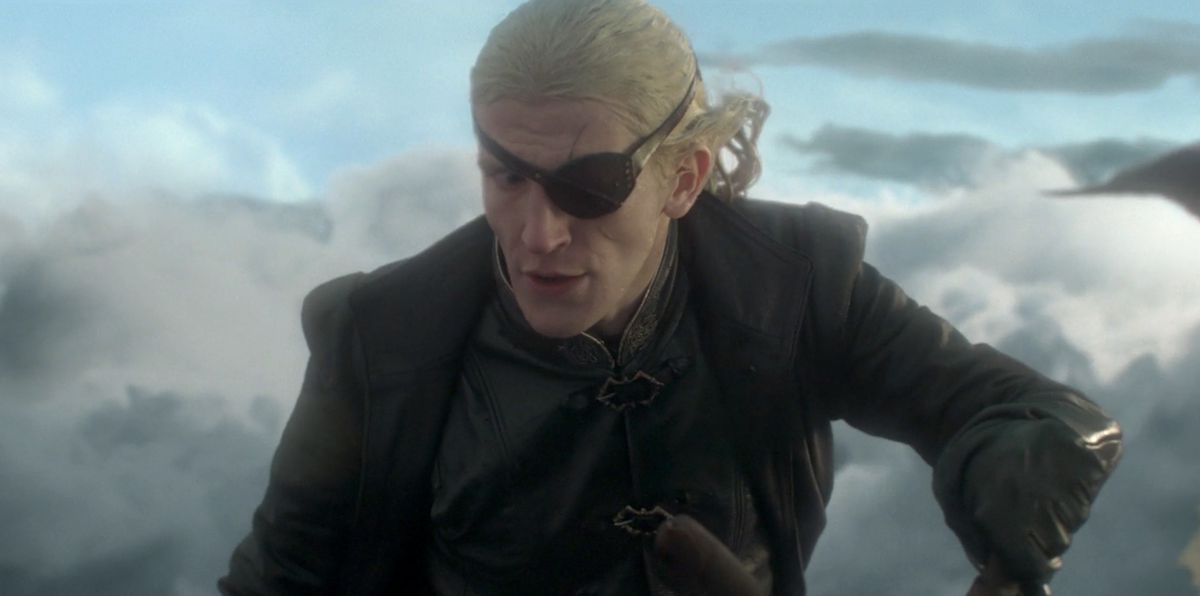The House of the Dragon season 2 premiere lets side characters shine in the spotlight in a way the book never could
House of the Dragon has always been about how the smallest decisions can have unforeseen consequences, but rarely has that theme been as clear as in the season 2 premiere. In the show’s first episode, back from hiatus, Daemon Targaryen decides to take matters into his own hands with a plot that probably could have used a little more planning (classic Daemon). But while the book version of these events is appropriately brutal, the show’s approach is calmer, more human, and perhaps a little more gruesome.
(Ed. remark: This story contains spoilers for House of the Dragon season 2 episode 1.)
In the book version of the story, the assassins at the center of this episode’s action are called Blood and Cheese. And while they don’t get these crazy names in the show, they do get a level of horror and humanity that the book doesn’t have time for. The book versions are boogeymen, terrifying villains who murder a handmaiden and a handful of guards, and seem gleefully cruel in the way they kill Prince Jaehaerys – tricking Queen Helaena into first naming her youngest son to death before killing her firstborn instead kills.
Image: HBO
And while those versions of the characters are significantly more stomach-churning, the show’s approach feels much more thematically appropriate. Instead of the murderous specters from the book, who sneak into the Queen Mother’s chambers and leave behind a pile of bodies, House of the Dragon‘s assassins simply move through the castle unnoticed, a few hired hands of low status and low intelligence, functionally invisible to the royalty who own the halls. When they encounter difficult moments in the castle’s tunnels, or difficult choices, they panic, bicker and bumble. The show’s Blood and Cheese aren’t gifted killers, they’re just amoral men sent to do something disgusting that no one thought possible.
What adds to all this is the sense of desperation that the pair’s encounter with Daemon seems to have instilled in them. According to showrunner Ryan Condal, the team wanted the set to play out like a “heist gone wrong,” and as the scene progresses, we can feel their worries kick in, making them more reckless, cruel, and rushed into the situation. process. Although the show cleverly leaves Daemon’s final words a mystery, the pair’s fear of what Daemon will do to them if they fail is palpable.
“We know who Daemon is; I don’t think he necessarily directly ordered the death of a child,” Condal said during a roundtable discussion. “But he said clearly: If it’s not Aemond, don’t leave the castle empty-handed.”
So when they can’t find their original target, it makes sense that these two decide to settle for the first royal son they can find. It’s the kind of rash decision only these two brutes could make. And in a scene that is both grotesque and funny, the two assassins realize they can’t even tell the two sleeping children apart, and must fight their way through Helaena’s response. The whole thing is a ridiculous farce from two people who are barely competent enough to pull this all off.

Image: HBO
All of this builds on the show’s fantastic slippery slope of assumptions. While the audience may know that Aemond’s murder of Lucerys Velaryon in the skies above Storm’s End was an accidental consequence of not understanding the power of his own dragons, for Daemon it seems like an act of clear and predetermined aggression. He probably didn’t expect the killers to get away with the head of a toddler prince, but he thinks releasing two killers into the Red Keep with less than clear orders is nothing more than a mild escalation.
These are the kind of spiraling, ill-informed decisions that House of the Dragon builds its beautiful, flawed and deeply human history. Sure, the show has been elevated to the heights of fantasy, but at its core it’s still a story of broken, angry, and flawed characters making rash decisions and then dealing with the consequences – those consequences often have to do with dragons and war .
All this is of course in line with Martin’s vision. It’s the same kind of storytelling he uses throughout A Song of Ice and Fire, but in the original Game of Thrones series often had to cut back on the humanity of the story simply because of its sheer scale, it’s continually exciting to see how effectively House of the Dragon goes in the opposite direction and builds on Martin’s written history Fire & Blood and turning these quasi-mythical historical figures into flesh-and-blood humans and incredible characters, right down to the lowlife killers who don’t even need their silly little names.
